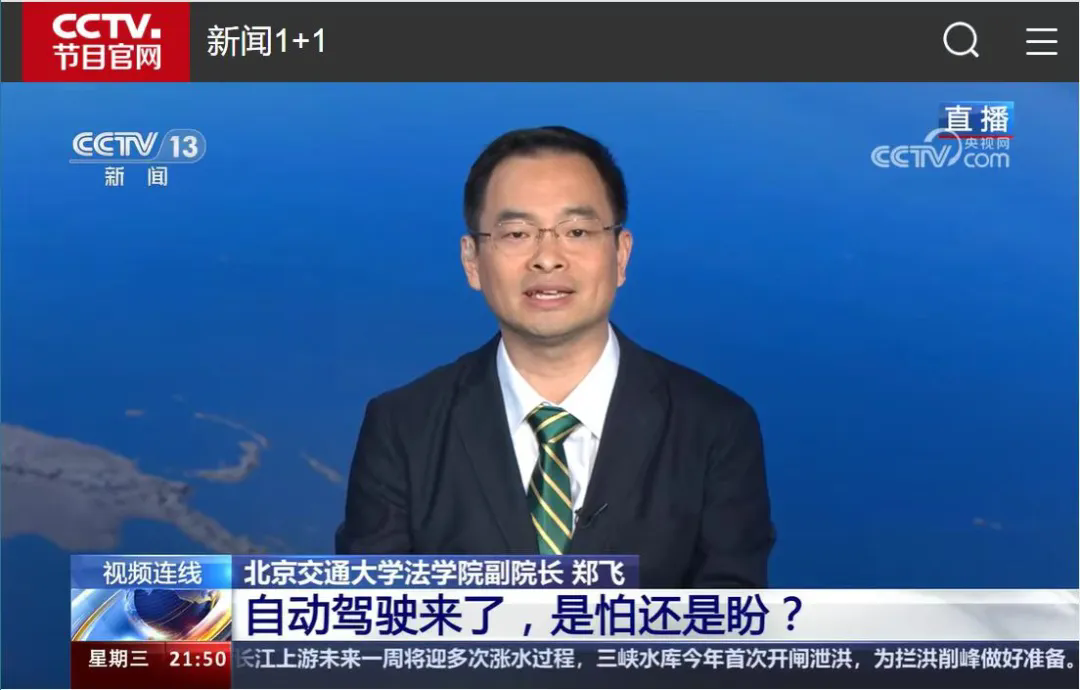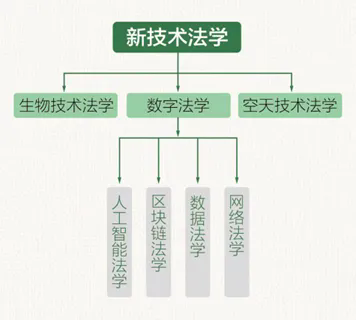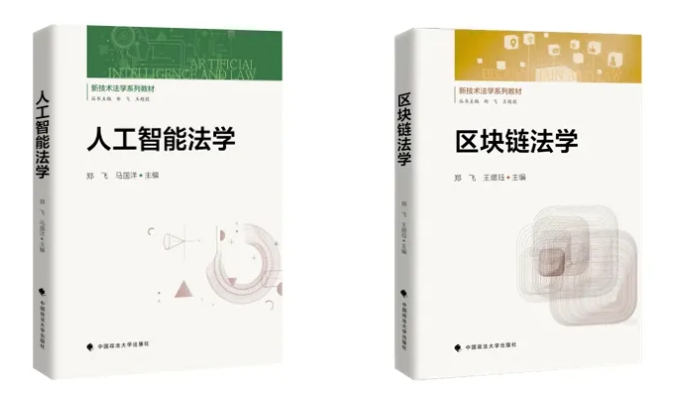On July 10, 2024, Zheng Fei, a part-time lawyer of King&Capital Law Firm and associate dean of the School of Law of Beijing Jiaotong University, was invited to live broadcast the “News 1+1” program and discussed the topic of “Autonomous Driving is Coming, Is It Fearful or Expectant?” with host Bai Yansong. and host Bai Yansong had an in-depth discussion on the topic.

During the conversation, both sides discussed the legislative timing, legislative features, infrastructure and regulatory approach of the Beijing Autonomous Driving Vehicle Regulations (Draft for Public Opinion).
1
Legislative Timing
Regarding the timing of the legislation, Vice President Zheng Fei pointed out that the time is ripe for Beijing to introduce the Regulations. in September 2020, Beijing took the lead in planning and constructing the country's first high-level autonomous driving demonstration zone, and carried out key technology verification of the vehicle, road and cloud integration system by focusing on the five elements of “vehicle, road, cloud, network and map”. From a technical point of view, from L2 to L3, has been regarded as an important inflection point from intelligent assisted driving to real autonomous driving, and at present, autonomous driving cars are in the eve of large-scale application. However, to promote the landing of autonomous driving application scenarios, it is necessary to first solve the problem of the application of autonomous driving vehicles without evidence to follow, can not be relied upon. So the drafting of this “Regulations”, first, I hope that it plays a role in safeguarding the rule of law, to legislate for the development of the new quality of productivity to provide institutional support, so that self-driving cars on the road to have a law to follow, so that self-driving car innovation activities have a basis to follow. Secondly, I hope it plays the role of stabilizing expectations. Play the role of the rule of law to solidify the fundamentals, stabilize expectations, and benefit the long term, to support self-driving car technology innovation and industrial development in the form of a law fixed, to eliminate market doubts, and stabilize market confidence. Thirdly, I hope it will play a role in guiding development. The Regulations provide specific norms for self-driving cars in six aspects, including general provisions, industrial innovation and development, infrastructure planning and construction, regulation of innovative activities, and safety and security, covering the main aspects of the self-driving car industry, solving the problems of who should be in charge, what should be in charge, and how to be in charge, and providing clear guidelines for the healthy development of the self-driving car industry.
2
Legislative Characteristics
Regarding the legislative features, Vice President Zheng Fei pointed out that the Regulations have the following three major characteristic highlights, one is not preset technical routes. Compared with Shenzhen and Hangzhou, the Regulations adopt the more technology-neutral term “self-driving car” instead of the concept of “intelligent networked vehicle”. Intelligent network connection is only one of the paths in the self-driving technology, and only one of the mature technology routes, if it is named after it, it limits the track of technological innovation with the law. The Regulations do not preset the technical route of the legislative thinking for the bold innovation of automatic driving technology leaves the legal space. Second, adhere to the problem-oriented. The Regulations closely focus on the realistic needs of the development of the autonomous driving car industry in Beijing, take the pain points, difficulties and blockages encountered in the development of enterprises as a breakthrough, and in accordance with the principle of “limited legislation”, focus on solving the main problems faced by the innovative activities of autonomous driving cars in specific areas of the city through the formulation of authorizing, obligatory, prohibitive and declaratory norms. The main problems faced by self-driving car innovation activities in specific areas of the city. Some people in the practical field have pointed out that “Beijing Regulations is one of the most operable and closest to the reality of self-driving regulations.” Third, it adheres to a balanced approach. The Regulations clearly emphasize both development and safety, and promote and regulate management ideas, and actively promote innovative management, development and application of self-driving cars on the basis of adhering to the safety bottom line.

3
Infrastructure Issues
Regarding infrastructure issues, Vice President Zheng Fei pointed out that, from the application of self-driving shuttle service, Beijing has already realized the self-driving shuttle service from the demonstration area to Daxing Airport and the short-distance shuttle service around the three major buildings of the sub-center, and it will gradually open more stations with the maturity of the conditions to realize self-driving shuttle service at the Beijing South Station, Fengtai Station, Chaoyang Station, Qinghe Station, the station at the city's sub-center, and the Daxing Airport, Daxing Airport and Capital Airport. In addition, there is intelligent roadside infrastructure to ensure the safe exercise of self-driving cars, which mainly includes roadside communication, computing units, roadside sensing equipment (such as cameras, LIDAR, millimeter-wave radar), traffic management facilities and so on. It is an important part of the vehicle-road-cloud integration development idea. It can realize intelligent road condition monitoring and efficiently optimize traffic flow; it can assist self-driving cars in expanding their sensing range and assist vehicles in high-precision positioning and navigation.
4
Regulatory Sandbox
Regarding the regulatory sandbox issue, Vice President Zheng Fei pointed out that the regulatory sandbox can provide a relatively relaxed testing environment for self-driving cars, which can, to a certain extent, dispel the concerns of enterprises, so that their technologies or applications do not have to immediately comply with all the existing regulations and standards, and encourage them to make bold attempts to accelerate technological innovation and breakthroughs. In addition, traditional regulatory approaches often require companies to comply with a series of strict standards and regulations before their products can be marketed. The regulatory sandbox, on the other hand, lowers the threshold for market entry by setting certain testing areas and conditions and allowing enterprises to try things out first in these areas. This helps attract more companies and investors to enter the field of self-driving cars and promote the rapid development of the industry. Furthermore, the regulatory sandbox can improve the precision and effectiveness of regulation, and the regulatory sandbox requires the establishment of a closer cooperation and communication mechanism between regulators and enterprises. Regulators can keep abreast of companies' testing progress, technical difficulties and risks, so as to formulate and adjust regulatory policies and measures in a targeted manner.

In addition, Vice President Zheng Fei also answered the questions raised by the moderator about the collaborative regional development of autonomous driving, specific application scenarios, future development direction, and the impact on people's lives.
In recent years, Vice Dean Zheng Fei has been focusing on the study of new technology jurisprudence and organized scientific research. In the construction of discipline system, the new technology law team led by Vice Dean Zheng Fei has constructed a discipline system consisting of six major directions, including artificial intelligence law, blockchain law, data law, cyber law, biotechnology law, and space technology law, forming a pattern of “one body, two wings, and six major directions”.




